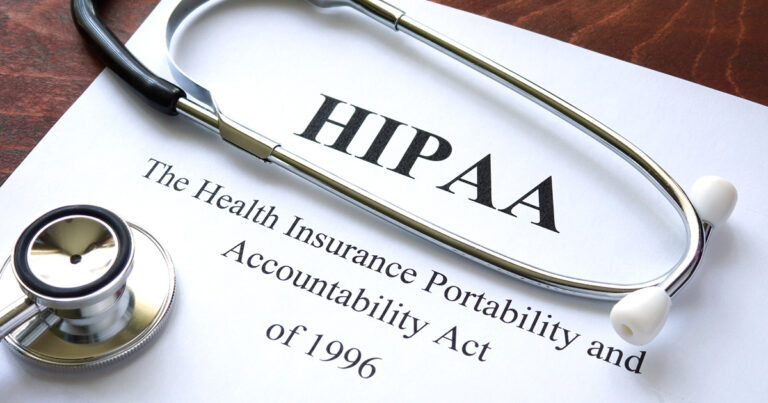What to Know Before Converting Paper Medical Records to EMR
How do you start the process of converting your paper medical records to electronic ones? In short: very carefully.
There are a few challenges faced by healthcare professionals when it comes to dealing with health care files that can make it a slightly more tedious process to digitize.
Some of these challenges include things like:
- State laws that determine how long you must keep records
- Whether or not you have the time to scan individual files
- The costs (and HIPAA concerns) of outsourcing file scanning
- What to do with paper files after scanning
Considering that there are plenty of benefits to keeping Electronic Medical Records (EMRs), making sure that the process is as painless as possible – and as secure as possible – is essential for those involved.
Here are a few tips for making a smooth transition.

Time, Cost and Privacy Are Considerations
Converting your paper files to electronic files is in itself a rather straightforward task: You simply have to scan the paper record and enter the information into the EMR system.
But considering that the average primary care practice sees around 2,184 patients every year, and that most practices keep multiple records for patients for anywhere between 5-7 years, it can add up to a lot of paperwork.
Your practice may have entire rooms dedicated to your paper file storage, and the idea of scanning all those documents by hand may feel daunting.
You do have a few options, however. You could:
- Pay current staff to scan documents in their spare time
- Hire temporary staff to scan documents as needed
- Send files to a third party company that scans and uploads documents to the cloud
Each option presents its own set of issues, however. If you pay your own staff to do it, it can take a while for them to get everything finished (they have other duties, too). It may cost too much to hire new staff for the task.
If you send out to a third party, you risk HIPAA violations and other privacy concerns, or risk that files won’t be filled out to the proper standards.
So what’s the best solution? Ultimately, it depends on your budget and timeframe.
Typically, it’s best to keep medical records in house if possible. If you can’t spare the time for your own staff to scan them, considering hiring temps to fill in the gaps. But keep in mind that there’s not necessarily a rush to get files scanned.
Your current staff can transition new patients fairly easily and work their way through the older files as needed. This may save you time and money in the long run if you’re unsure about costs.
You Don’t Have to Convert Everything
You also have another option: Convert only the information you need and leave the rest in a paper file.
While converting all the information in paper medical records to electronic medical records can make your paper records obsolete (meaning they can be stored off site if needed, saving you office space), you can also convert only the essential information instead.
Important information may include notes from the last few visits, medication list, medical history, latest lab tests and results, a problem list, and so on.
This hybrid approach can save you time and effort, since your staff only has to scan patient information that is needed at the time (essentially there’s no back-scanning of older patient files, and new patients are instantly converted to EMR).
Over time, your staff and physicians become less reliant on paper files, and the important information will be found in the EMR system. While this may not save you on space – you will still have to keep your paper files – it can make the transition easier.
Electronic Files Have to Match Paper Files
If you decide to take the hybrid approach – or you convert your files over time, relying on both paper and EMR while older files are still being scanned – the most important task for your staff will be ensuring that paper files match electronic files perfectly.
If there is information from paper patient medical records missing from electronic medical records – even “less important” information – those records will not be fully merged.
Doctors or staff looking at the electronic file may be missing important information present on the paper files (or vice versa), and errors in scanning or data entry may result in incomplete, missing or incorrect patient information.
This can lead to safety concerns as well as privacy concerns for the clinic and the patient.
The Medicare General Information, Eligibility and Entitlement Manual also stipulates that EMRs can only be used (and paper files can only be disregarded) if the EMR matches the paper file perfectly.
This needs to be taken into account if you decide to only scan certain parts of the paper file into the EMR, as you will need to keep the paper file around to ensure a certain level of quality control.
You will also need to check and double check your EMRs for errors before destroying your paper medical records.

It Will Take Time to Fully Transition
The most important thing to keep in mind is that transitioning will take time. You also have the ability to retain paper files before, during and after converting to EMR, should you have concerns about the accuracy of the data or the security of your EMR system.
It may be helpful to create a transition timeline for your team to understand how to start the transition process.
Steps to the transition process might include:
- Converting all new patient intake forms to online forms (that are automatically integrated with your EMR system)
- Creating a list of current and active patients (in the last 12 months or so) and marking files to be scanned
- Marking essential information to scan first (if not scanning the whole document)
- Assigning days and times for staff to scan records (or beginning the hiring process or outsourcing process)
- Creating a list of non-active or semi-active patients and working backwards
- Scanning older files after new files have completed
- Checking and re-checking the accuracy of scanned files, making edits as needed
- Creating a plan for the disposal or storage of paper files
You can also use EMRs for day forward patient visits and use the paper charts when referencing historical information before the EMR was implemented. Most practices start the EMR transition with this option first, and it is a good way to ease into having electronic records without overwhelming your team.
Final Thoughts
Be sure to assess your budget, timeframe and labor needs before beginning the process. You also want to ensure that your EMR system has features that allow the scanning process to go smoother, such as image recognition (for patient charts) and handwriting analysis.
Remember that not all notes in a patient file will need to be scanned into an EMR. If there are other notes or information not related to the chart itself, you may be able to scan them as an image and store them in your system for quick access later.





